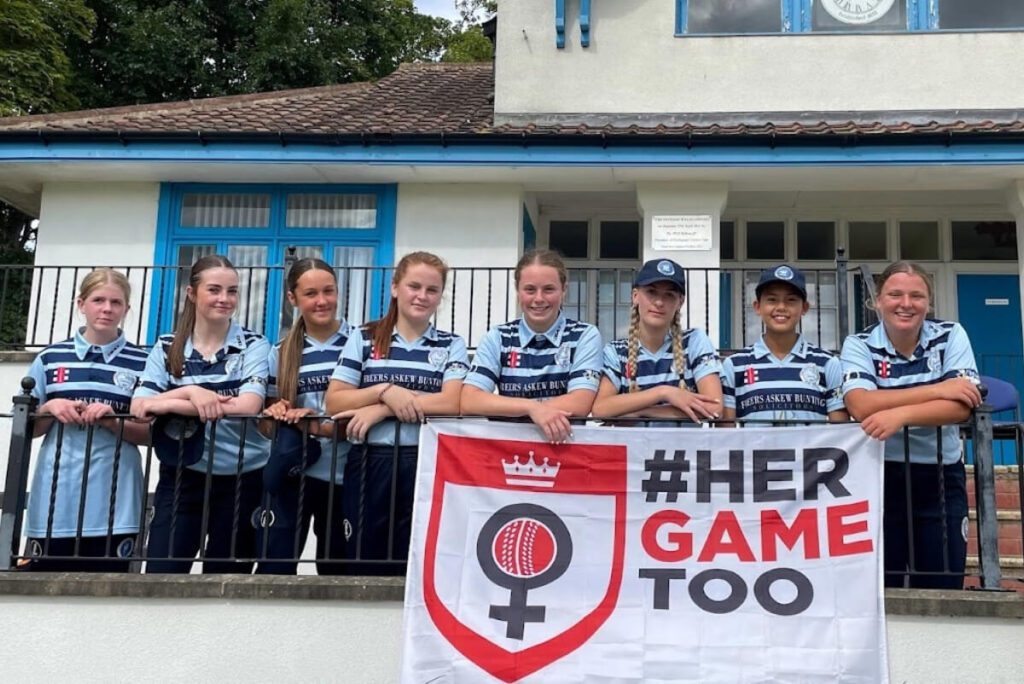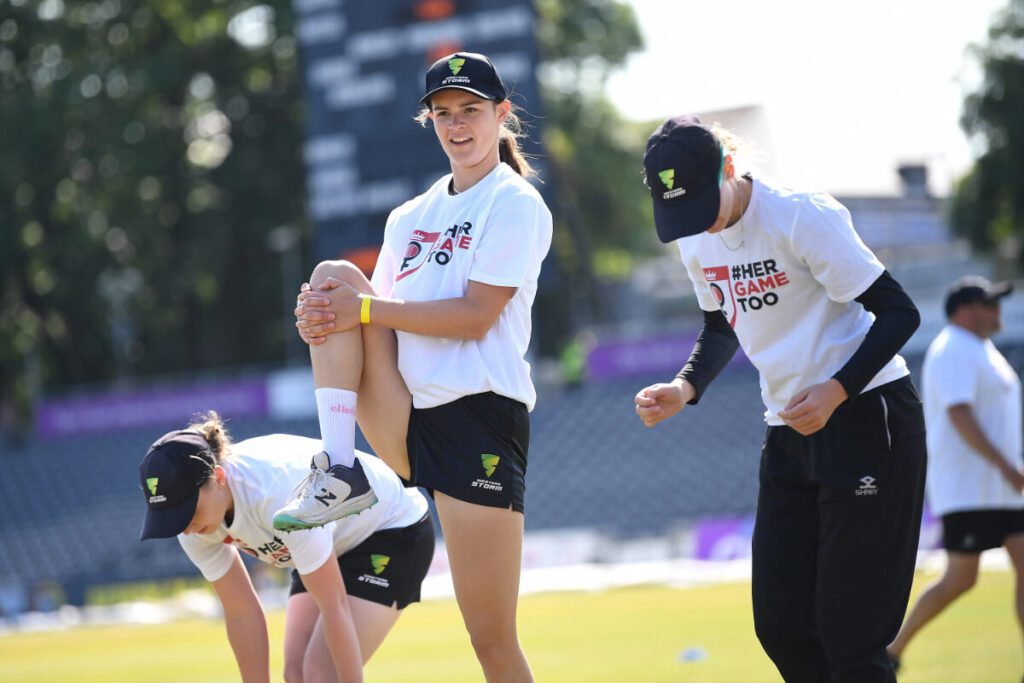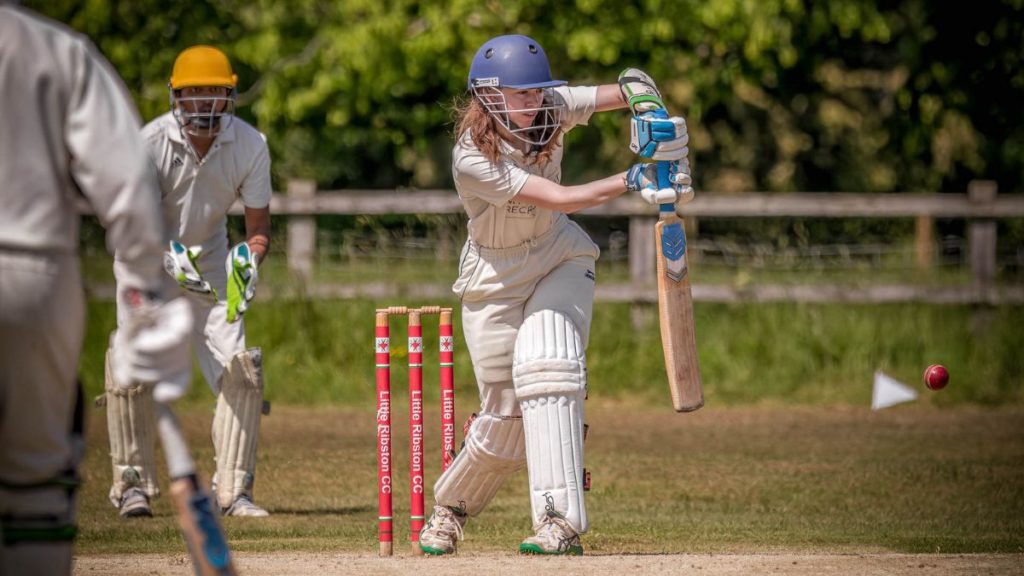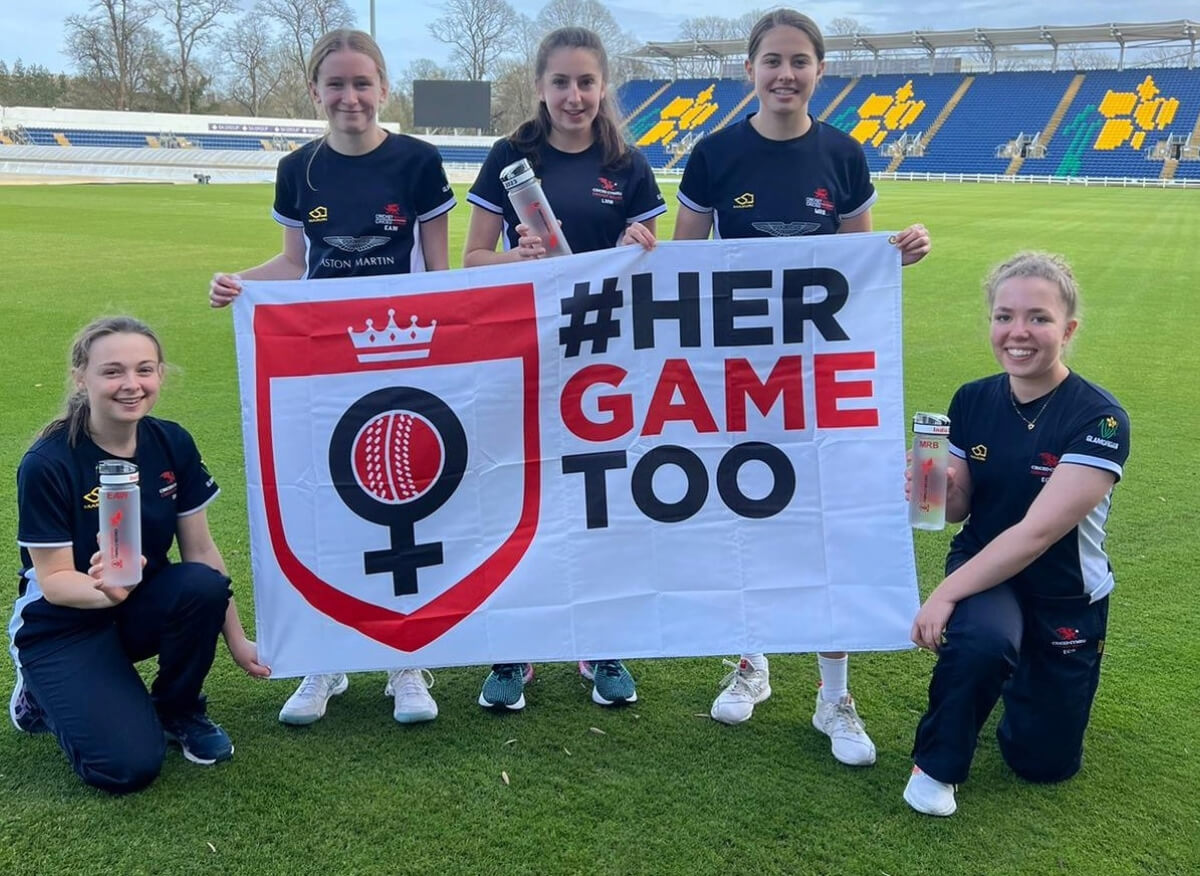Charlotte Ashton looks at how we make club cricket more inclusive for all from facilities to the language we use. She also introduces her Game Too and the role that is having in the grassroots game.
When we think of club cricket, an image that might come to mind is one of older men dressed in cricket gear that is virtually ancient, playing in a field surrounded by cows.
Changing with the times
Whilst that is often a beautiful and accurate portrayal of the game we love, club cricket is changing and becoming more diverse than ever. The number of women’s and girls’ cricket teams has tripled in Yorkshire since 2020.
Alongside that growth of teams, there has been a surge in the number of women playing club cricket – whether that is as part of a predominantly male XI, or in women’s leagues that are popping up across the county.
As someone who plays both, the only female player on my 2s side on a Saturday and part of a women’s team on a Sunday, it’s fair to say that my weekends in the summer pretty much exclusively revolve around cricket.

What does gender inclusive look like?
Playing in the Nidderdale Cricket League on a Saturday has made me notice a few things over the years, and the number of female players – usually teenagers and young women – is slowly increasing.
This is fantastic and shows growth in the game, and what’s more is that female players want to play in these mixed teams, whether that’s because they’re local, or they just enjoy it.
So, how can we keep encouraging female players and make sure that they feel supported within club cricket?
There are a number of things that we can look at to make club cricket more gender inclusive and accessible for all.
Some of these examples are more obvious than others, but there are some quick changes we can all make to help make the game we love a welcoming environment for all.
A recurring issue that I face when playing village cricket is a lack of toilets or changing facilities for women.
There have been occasions where I’ve turned up to grounds, asked where the toilets are and been told: “Oh, you might have to go behind a bush” or the toilets have been locked and the only access is through the men’s changing rooms.
Obviously, some of this falls into village clubs not receiving much funding, and none of us expect new facilities to be built on no money, but there are some changes to be made here!
Whether that is reserving a toilet for unisex purposes, or just showing an understanding and empathy for female players in these situations, these small steps go a long way.


Adapting the language of cricket
Another useful thing to think about when making club cricket more gender inclusive is looking at the language used within clubs.
Some things to think about is how you refer to players, and just making sure that we all refrain from using unnecessarily gendered terms such as “batsman”, when “batter” is an effortless alternative, or not telling people to “man up” or that they “throw like a girl”.
These are all things that everyone can be guilty of, and may seem insignificant, but have a real impact on the mentality of a team and help build confidence in a team environment.
Another thing that is so important in making cricket more equal in terms of gender is speaking out or challenging behaviour if you witness any sexism or misogyny.
That’s where Her Game Too Cricket comes in.
Starting out as a campaign to combat sexism against female football fans, Her Game Too has grown exponentially since its inception three years ago to now cover football, cricket, rugby, and ice hockey.
As well as partnering with professional clubs, such as Gloucestershire, Essex, and Thunder, and organisations such as the Lord’s Taverners, Her Game Too Cricket does a remarkable amount of work within the grassroots game.
As part of that, Her Game Too provides a reporting system where players, spectators, or volunteers can report any incident of sexism or misogyny, no matter how big or small of an issue it may seem.
The aim of the reporting system is to help resolve incidents, as well as forwarding incidents on to relevant bodies, with permission of the submitter. All reports can also be anonymous, which helps to tackle any feelings of anxiety, guilt, or shame around raising awareness of incidents.


Her Game Too: Become a partner club
In terms of making cricket feel more accessible and creating a safe space for all to enjoy the sport we love is to become a partner club, organisation, or university with Her Game Too.
You don’t even have to have an active women’s or girls’ section to help champion the female game, as this can show a commitment to gender equality within your local communities.
Partnerships with Her Game Too mean that players, volunteers, officials, and spectators have a clear system in case of any incidents, and it actively encourages male allies within cricket.
We’ve already partnered with so many great clubs across the country and within Yorkshire, including St. Chad’s Broomfield, the University of York, Sheffield Collegiate CC, and Oughtibridge CC, to name a few.
Within cricket, our shared aim is to promote the sport we love and bring communities together through sport, and that’s why tackling gender gaps within cricket is so important.
There’s never been a better time to get involved with female allyship, and supporting your local women’s and girls’ teams is one of the best ways to do this.
So, if you’ve got a spare few hours to volunteer with coaching, scoring, umpiring, or even making our cricket teas, I’m sure any efforts would be greatly appreciated!


Thanks to Charlotte who is the creator of Is That Middle? a digital magazine dedicated to women’s cricket in all of its forms.
She works towards getting more female players into cricket, as well as explaining the laws and terminology of the game, alongside reporting on key moments in cricket.
Her Game Too Resources
You can follow @hergametoo on X/Twitter or @hergametoo on Facebook and explore the Her Game Too website.

